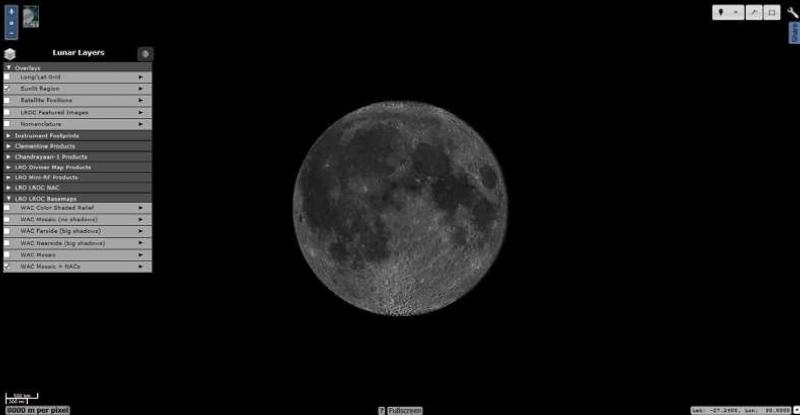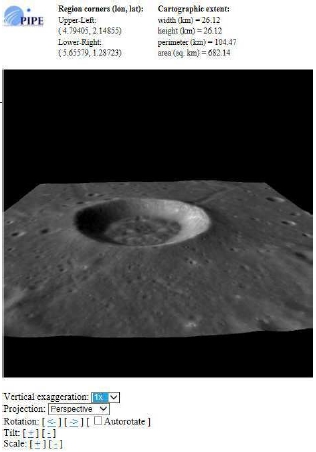2017 February 2
Introducing QUICKMAP – an invaluable resource for the lunar observer
“An up to date tutorial on the latest Quickmap has subsequently been published and can be found here.”
There are those who would argue that the ever-increasing flow of lunar data from spacecraft has effectively rendered the telescopic lunar observer redundant. The truth is just the opposite: spacecraft datasets, freely available via the internet, have provided powerful new suites of tools that the amateur can use to supplement his or her observations.
The earliest such datasets took the form of high-resolution imagery returned by the Lunar Orbiter and Apollo missions of the 1960s and 1970s, but recently we have seen the release of a wonderful new resource that allows us to access and manipulate imagery and data derived primarily from NASA’s Lunar Reconnaissance Orbiter vehicle.
Much of this data has not been systematically used by professional scientists, simply because there are not enough professionals and too much data! There is thus a great opportunity here for amateurs prepared to familiarise them-selves with the datasets.



You can also overlay useful datasets, including a colour-shaded relief map (Fig 2 – this shows the small crater Rhaeticus A) and mineralogy data from the Clementine mission (Fig 3).There are many more useful options under the ‘layers’ menu, and I urge you to experiment.

Other valuable tools may be pressed into service by clicking on the spanner icon in the top right-hand corner. For example, clicking on the middle button revealed by the spanner (the ‘line tool’) allows you to use the mouse to draw a line between two points. Simply click once where you wish the line to start, drag across to your chosen finish point and then double click. QuickMap will then magically generate a relief profile of the lunar surface along the line you have drawn, using data derived from the Lunar Orbiter Laser Altimetry (LOLA) results (Figure 4).
This is an incredibly useful tool for understanding local topography, but do bear in mind that the graphic profiles generated are exaggerated in elevation (although true elevations in metres are given on the left of the profile). The button to the right of the line tool (the ‘search tool’) is great fun. It allows you to draw a box around your chosen feature of interest, simply by clicking and dragging your mouse. If you then click on the highlighted box, followed by ‘Query’ and ‘3D live’, a window will eventually appear entitled ‘PIPE: Region of interest’. Scroll down this window until you reach a link marked ‘NEW! Click here to access an experimental 3D visualization tool’. Clicking on this will reveal a 3-D model of the area selected, which you can tilt and rotate at will using your mouse (Figure 5).

Again, this can reveal much topographical information about an area that you may previously have examined through your telescope. What would our lunar observers of the past have given to have had access to such riches? Many of the topographical problems that exercised them can now be solved at the click of a mouse, even when the sky is cloudy. We have here only scratched the surface of what QuickMap can offer the lunar explorer. The site is constantly being updated, and the instructions given will no doubt have to evolve in order to reflect those changes. The best thing is simply to experiment – and don’t forget to send in your findings to the Lunar Section! A glance at recent issues of the Lunar Section Circular (available as PDF attachments on application to the Director) will readily show how QuickMap is now regularly enhancing the work of our lunar observers.
Bill Leatherbarrow, Past President, Director, Lunar Section
Article originally published in the JBAA 124, 4, 2014
[To search for lunar observations uploaded by BAA members, following this link to search the BAA Member Pages]
| The British Astronomical Association supports amateur astronomers around the UK and the rest of the world. Find out more about the BAA or join us. |
